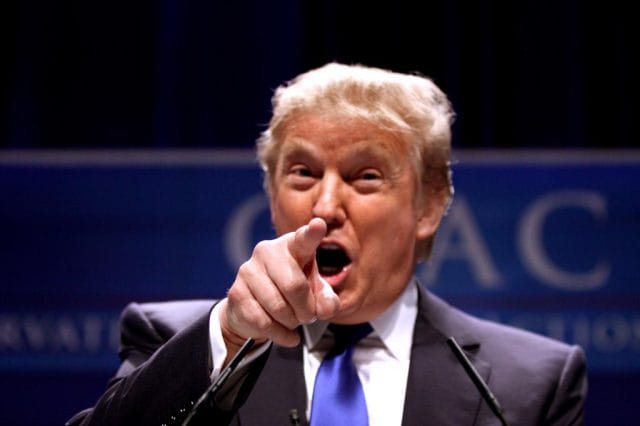“It was a nice experience. It was fun. We had a great lawsuit.”
– Donald Trump talking to Mike Tollin in the ESPN documentary Small Potatoes
*****
In 1983, thousands of fans drove to Memorial Coliseum in Los Angeles to watch the professional debut of Herschel Walker. The previous year, the electrifying running back had won the Heisman Trophy, college football’s highest honor. That Sunday, the home team held Walker to 65 yards on 16 carries. But Walker did score his first touchdown on a 5-yard run to the outside.
The short run was also the first touchdown ever scored by Walker’s team, the New Jersey Generals, and the first ever given up by the home team, the Los Angeles Express. The game was played in early March, five weeks after the Washington Redskins won Super Bowl XVII.
This was not an NFL publicity stunt. In fact, the sight of Herschel Walker scoring his first touchdown made NFL executives nervous, because Walker was playing in a new, competing football league: the United States Football League (USFL).
The USFL had a solid first season. Walker led the league in rushing with 1,812 yards and 17 touchdowns. An average of 25,000 fans attended the twelve teams’ games, which were broadcast on ABC and a fledgling network called ESPN. Most of the sports world had expected the USFL to fail. By the end of the its first season, however, it had attracted a fanbase and expectations that it might be for real.
Success lured new fans and college football stars. It also attracted Donald Trump, who bought the New Jersey Generals for a bit more than $1 million, poached star NFL players with large contracts, and made the USFL front-page news.
Three years later, the nearly bankrupted league shut down. In 2009, a documentary looked back at the league and asked “Who killed the USFL?” The documentary presented a clear answer: Donald Trump.
A Timely Challenge
The opening season of the United States Football League was perfectly timed to take advantage of frustration with the NFL.
In 1982, the NFL played a shortened season due to a player’s strike that lasted until November. For two months, television networks aired Canadian football games and old NFL games. This made fans—and players who felt underpaid and underappreciated—receptive to the new league.
The founder of the USFL, David Dixon, had also learned from the failures of the World Football League, a 1970s competitor to the NFL that had only played one full season. Instead of competing against the NFL in the fall, Dixon decided the USFL would play in the spring. To keep costs low, he implemented a salary cap of $1.8 million. Once the USFL signed a $13 million TV contract with ABC and ESPN, he figured teams would be able to pay their bills.
The USFL enjoyed another advantage: The NFL had faced no serious competition since its merger with the American Football League in 1966. This made the NFL stodgy. During its 3 seasons of play, the USFL unveiled policies like instant replay, challenges (the ability for coaches to contest a referee’s call), and two-point conversions that the NFL eventually copied. The USFL’s young couches also developed or popularized the zone-blitz defense and the pass happy run-and-shoot offense.
In its first season, the USFL suffered from some bloopers. Once a quarterback tried to take a snap from an offensive guard rather than the center who had the ball, and fumbles were common. But the highlight reel from the league’s first week, shown below, includes a kicker nailing three 49-yard field goals and a juggling catch under double coverage.
The players could play.
Most importantly, the USFL was entertaining. Unlike the regulation-heavy NFL, the clean-slate USFL allowed players to celebrate with crazy dances and full-team celebrations. The league was a second chance for players passed over by the NFL, and they relished the opportunity.
Fans seemed to embrace the upstart league’s fun, underdog persona. When George Foreman officiated a wedding during halftime of a San Antonio–Houston game, the fans cheered wildly. In the aforementioned documentary Small Potatoes: Who Killed the USFL?, sportswriter Bill Simmons recalls Boston sports fans rushing the field to celebrate when a Boston Breakers receiver caught a tipped pass in the end zone for a winning touchdown. “It was just a regular season game,” Simmons added.
“People always talk about the NFL as the No Fun League,” former broadcaster Charley Steiner says in Small Potatoes. “The USFL was the fun league.”
When the Michigan Panthers defeated the Philadelphia Stars 24–22 in the USFL’s first championship, USFL boosters compared its exciting finish to the boring Super Bowls of the previous 3 years. The Panthers were led by quarterback Bobby Hebert, who was on food stamps before the season started. He threw a late touchdown pass in front of 50,000 screaming fans.
A Divided Leadership
After the USFL’s first season, Donald Trump purchased the New Jersey Generals. According to Mike Tollin, who worked for the USFL and made the Small Potatoes documentary about the league, this was the beginning of the end.
“I think the one word reason you could use to describe why the USFL went away was greed,” ABC sportscaster Keith Jackson told Tollin. “Donald Trump was not happy being involved with what some people call a second level league.” Like many commentators, Jackson and Tollin say Trump drove the league to take the NFL on directly, which bankrupted the USFL.
Although that may be true, the league’s owners had already been divided on USFL founder David Dixon’s conservative plan. Most abandoned it in favor of going big from the start.
Before Trump bought the Generals, its former co-owner J. Walter Duncan ignored the league salary cap and signed Herschel Walker to a 3-year, $5 million contract. It was more than any NFL player made. “A bunch of guys got together and had a few beers and decided to start this league,” Duncan told the press. “And I had one too many, and decided to sign Herschel.”
John F. Bassett, the owner of the Tampa Bay Bandits, had experienced the expensive failure of the World Football League. He was determined not to repeat his mistakes, and his entire team’s payroll was less than what the Generals paid Walker. “It would be insane to get into a bidding war [with the NFL],” Bassett told the press, “and only play 8 games and fold.”
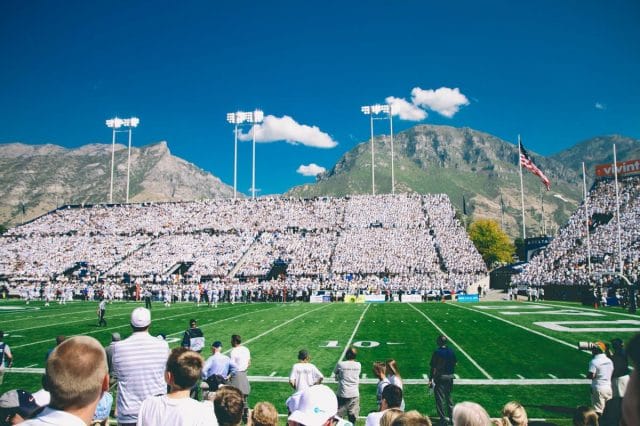
Americans’ appetite for college football convinced USFL founder David Dixon that the market could support a professional spring league. Photo by Abigail Keenan
But Bassett was in the minority. Most owners went on a buying spree, and the USFL’s commissioner publicly said, “I think there is no question on a player for player basis…that we are in a bidding war.” USFL teams signed the next two Heisman trophy winners. The owner of the Los Angeles Express literally threw wads of hundred dollar bills at Steve Young to sign the star quarterback out of college for $40 million. And Donald Trump poached star NFL coaches and players.
While Bassett and his allies focused on managing a new business, other owners enjoyed the attention lavished on team owners. The Los Angeles Express owner presented himself (falsely) as a billionaire and distributed programs at games that read “Meet Mr. Dynamite.” Donald Trump—who was already known as a brash businessman, but whom the media still occasionally called “low key”—happily found himself at the center of a media maelstrom.
“Donald Trump wanted to become a big shot and his entree into being a big shot was buying himself a football team,” Generals announcer Charlie Steiner told Mike Tollin. “He figured that he could buy his way… onto the front page.” After Trump attended a sports forum that featured Yankees owner George Steinbrenner, Trump gushed to a reporter, “Did you see the picture on the front page of the Post? It wasn’t Steinbrenner and Ed Koch. [Or] the mayor… It was Donald Trump and Ed Koch.”
The opposing aims and management styles between Trump and Basset turned into regular clashes, including a rivalry between their players. Their teams split their next two games, and the battle between Trump and Bassett’s visions for the league was also back and forth.
In 1984, the owners voted to expand the league from 12 to 18 teams. It was larger than the expansion imagined by the Dixon Plan, and selling franchises for $4 million apiece helped fund the USFL’s bidding war for NFL talent.
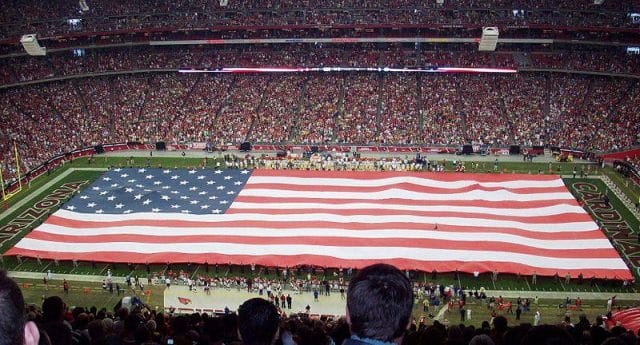
Photo by fan2007
But the expansion stretched the league thin and reduced average attendance and TV audience. While home games of the Denver Gold drew 40,000 fans, the press dubbed a matchup between the LA Express and Houston Gamblers “the greatest game no one saw.” Future NFL Hall of Fame quarterback Jim Kelly threw for over 500 yards to defeat future Pro Bowl quarterback Steve Young 34–33. Only a few thousand fans attended the game, which was not televised.
The USFL reversed course the next year. It shrank to 14 teams, moved to smaller markets, and stopped spending so much on NFL talent. “The USFL has gone back to its original concept,” one prominent agent told the LA Times, referencing the modest Dixon Plan. The owner of the USFL’s Portland franchise added, “The league was too ambitious last year–adding too many teams and spending too much for player salaries. This year you can say the USFL is back on track.”
Owners like Trump saw the changes differently. By moving to smaller cities that did not already have NFL franchises, they hoped to entice the NFL to merge with the USFL as it had merged with the American Football League in 1966. Trump also publicly said that the USFL should play in the fall. “If God wanted football in the spring,” he told the press, “he wouldn’t have created baseball.” Privately to the owners, Trump said they could only force a merger by directly challenging the NFL with a fall schedule.
In 1985, Bassett became terminally ill, and Trump got his way. The owners voted to move to a fall schedule. When the league struggled to sign a television contract, the USFL’s rivalry moved off the field and into the courtroom: the USFL sued the NFL.
The $1 Decision
When USFL attorney Harvey Myerson faced a jury, he told them that the fate of the league rested in their hands. If the jury did not award the USFL major damages—Myerson sought $1.7 billion from the NFL—the league would fold.
Myerson’s statement was not just a ploy for the jury’s sympathy. The USFL had lost $200 million during its short existence, and owners were firing employees while they waited for a resolution to the lawsuit. A sheriff in Tampa Bay had confiscated equipment from the team’s office to settle its debts. In the previous season, the owner of the San Antonio Gunslingers couldn’t pay all his players. He sent their checks to a small, faraway bank, and the players, who knew that only the first half of the checks would clear, raced each other to the bank.
The USFL charged the NFL with breaking antitrust laws: the regulations that ensure businesses compete fairly and that are used to break up monopolies. The attorney’s main charge was that the NFL used its dominant market position to prevent the USFL from getting a contract with one of the 3 major television networks.
Attorneys for the NFL argued that the USFL failed to entice the major networks because the league had a shoddy product. The USFL wasn’t trying to compete. It was engaging in bad business—spending beyond its means, moving franchises away from their fans to markets the NFL might want to expand into—to try and force a merger. The NFL attorneys devoted lots of time to painting Trump as a rich, cunning businessman intent on winning big by turning his New Jersey Generals into an NFL franchise. “The NFL played it smart,” Trump told Tollin in Small Potatoes, by portraying him as someone who didn’t need the money.
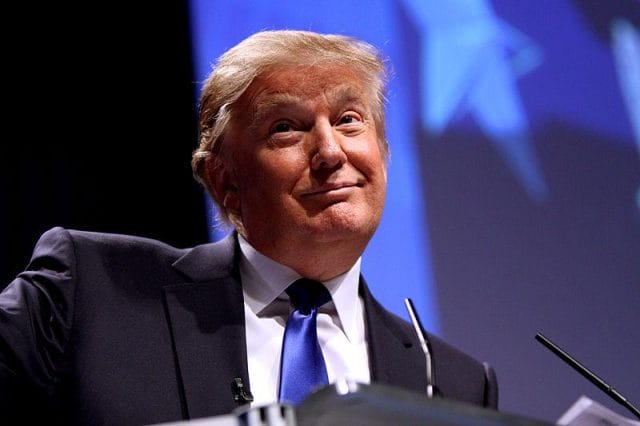
Photo by Gage Skidmore
Trump has denied masterminding the lawsuit. But Trump’s comments make it clear that his focus was acquiring an NFL franchise, and that he had no interest in playing second fiddle to the NFL. Speaking to Mike Tollin for his USFL documentary in 2009, Trump said, “I would have been better off if I just bought an NFL team. It would have been a lot easier.” When Tollin suggested that he thought the USFL could have survived if it kept playing in the spring, Trump dismissively replied, “It would have been small potatoes.”
On July 29, 1986, USFL owners fielded a phone call and learned that the jury found the NFL guilty of violating antitrust law and “conspiring to exclude competition within major league football.” The owners cheered, and one left the room to celebrate. He missed the bad news: the jury had awarded the USFL damages of one dollar.
The owners were confused. So were the jurors. One juror told reporters that the jury “decided on the $1 amount, believing that Judge Peter K. Leisure would understand that as a signal for him to decide the damage award.” (The judge did not change the penalty inflicted on the NFL.) The juror added that the $1 amount was “definitely a compromise” to avoid “a hung jury.” She sided with the USFL, but another juror stated that there was not enough “proof of chicanery” by the NFL.
When the USFL’s flabbergasted attorney heard the juror’s statements, he responded, “She said what?” But on appeal, a judge upheld the ruling. Damages awarded in antitrust cases are trebled, so the NFL sent the USFL a check for three dollars. They added another 76 cents in interest.
After the failed appeal, the vice president of the Memphis Showboats told the press, “We’re dead.” The indebted owners voted to shutter the league.
A New USFL
After the demise of the USFL, 187 out of its roughly 900 players joined the NFL, and five of them are now in the NFL Hall of Fame. Most of the other USFL players returned to mundane jobs. Donald Trump, of course, went on to become the archetype of monetized celebrity.
When Mike Tollin asked Donald Trump if he killed the USFL, Trump replied, “People can try and blame Trump… that’s the story of my life.” Tollin does blame Trump, and he fills the documentary with footage of people who feel the same.
Donald Trump definitely pushed the all-or-nothing strategy—a switch to the autumn and a giant lawsuit—that led to the league’s demise. But the jurors came close to making a decision that would have given the USFL a good shot at besting the NFL and made Trump look like a genius. It’s also unclear whether the desperate, indebted league had another option. Trump piloted the Hindenburg, but other USFL owners—by abandoning the considered and conservative strategy of founder David Dixon—filled it with hydrogen.
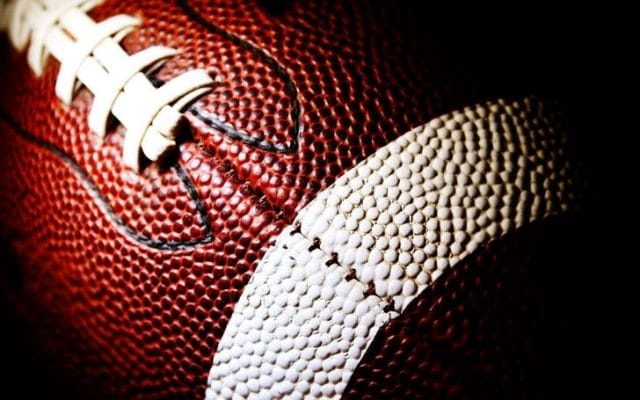
Photo by NFL News Desk Admin
But Dixon’s plan for a second football league may get another shot.
Although the USFL died, its name is back in use. It has been claimed by Jim Bailey, a former vice president of two NFL franchises who wants to start a new league once he has enough funding.
Bailey has met with USFL founder David Dixon, and he wants to implement Dixon’s original vision. He plans for the USFL to play in the spring and employ “players who have skill and talent but have fallen through the cracks in the NFL system.” The goal is to “keep the dream alive” of making it to the NFL for those players.
It’s a solid plan. It also seems too bad that Bailey aspires to work with the NFL rather than against it.
The USFL was good for professional football. It fostered or sped the adoption of exciting styles of play, led to a large increase in USFL and NFL players’ salaries, and forced owners to step up their showmanship to attract fans.
Recent play in the NFL has been entertaining—at least for this author from New England—but it suffers from the downsides of holding a (legal) monopoly. Under the ownership of Daniel Snyder—to pick one example—the Washington Redskins have a losing record, 8 head coaches in 16 seasons, and a name that is a racial slur. Yet the franchise Snyder paid $750 million for is now worth $2.85 billion. NFL commission Roger Goodell—who has bumbled through controversies, treated underinflated footballs as a bigger sin than domestic violence, and ignored concerns about player concussions—earns over $35 million a year.
The NFL might benefit from some competition. If his presidential run doesn’t work out, maybe The Donald will consider buying a franchise.
![]()
In our next post, we debate whether pie charts are for morons. To get notified when we post it → join our email list.
![]()
This post was written by Alex Mayyasi. You can follow him on Twitter at @amayyasi.
The lead photograph of Donald Trump is by Gage Skidmore.




